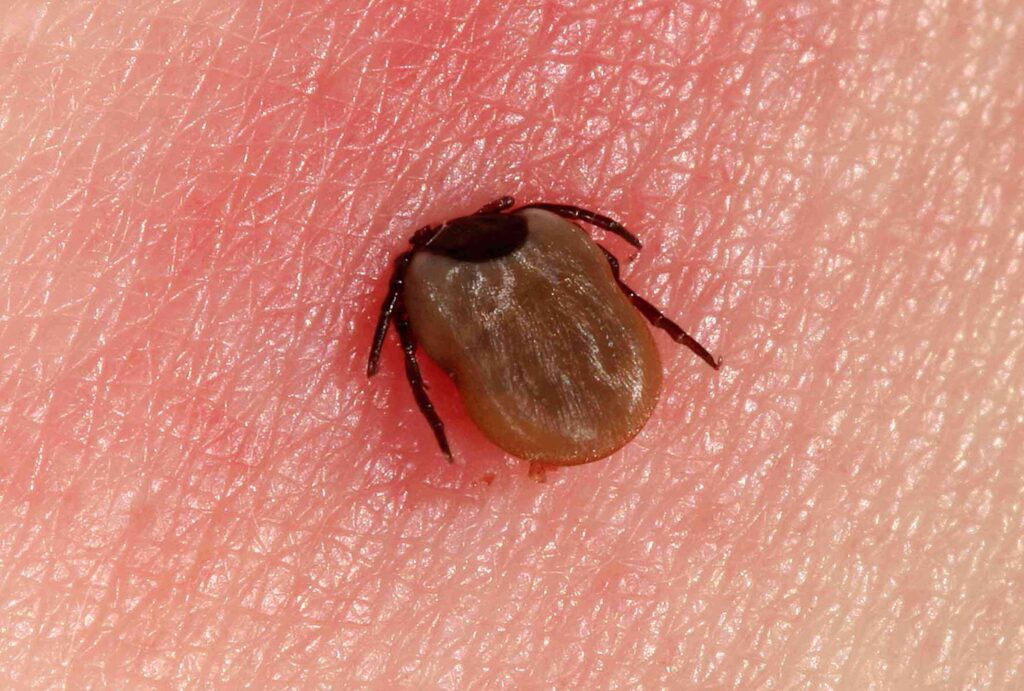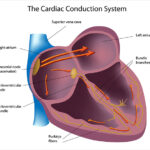Lyme disease is a tick-borne bacterial infection caused by Borrelia burgdorferi and, in some cases, Borrelia mayonii. It is primarily transmitted through the bite of infected black-legged ticks, commonly known as deer ticks (Ixodes scapularis). The disease can affect multiple organs, including the skin, joints, heart, and nervous system.

Causes and Transmission
How Lyme Disease Spreads
- Lyme disease is transmitted through tick bites, primarily from black-legged ticks.
- Ticks acquire Borrelia bacteria from infected animals like deer and rodents.
- A tick must remain attached for 36-48 hours to transmit the infection.
Risk Factors
- Spending time in wooded or grassy areas
- Having exposed skin while outdoors
- Not using insect repellent
- Living in high-risk areas (e.g., Northeast, Midwest, and Pacific Northwest in the U.S.)
Stages and Symptoms of Lyme Disease
Lyme disease progresses in stages, with symptoms varying at each stage.
Early Localized Stage (3-30 Days After Tick Bite)
- Erythema migrans (EM) rash: A red, expanding rash with a bullseye appearance.
- Flu-like symptoms: Fever, chills, headache, muscle aches, and swollen lymph nodes.
Early Disseminated Stage (Weeks to Months After Infection)
- Multiple EM rashes across the body
- Joint pain and swelling (Lyme arthritis)
- Neurological symptoms (facial palsy, meningitis)
- Heart palpitations (Lyme carditis)
Late Disseminated Stage (Months to Years After Infection)
- Severe joint pain and swelling
- Neurological complications (memory loss, nerve pain)
- Chronic fatigue and cognitive impairment
Diagnosis of Lyme Disease
Diagnosis is based on clinical evaluation and laboratory tests:
- Physical Examination: Checking for rash, swelling, and neurological signs.
- Blood Tests:
- ELISA (Enzyme-Linked Immunosorbent Assay): Detects Lyme antibodies.
- Western Blot Test: Confirms ELISA results.
- Spinal Tap (Lumbar Puncture): In cases of neurological symptoms.
Treatment Options
Antibiotic Therapy
- Early Lyme Disease: Treated with oral antibiotics such as doxycycline, amoxicillin, or cefuroxime for 10-21 days.
- Late Lyme Disease: IV antibiotics like ceftriaxone may be required for neurological symptoms.
Symptom Management
- Pain relievers (NSAIDs) for joint inflammation
- Physical therapy for mobility issues
- Anti-inflammatory diet to reduce symptoms
Prevention Strategies
- Avoid Tick-Infested Areas: Stay on trails and avoid tall grass.
- Use Tick Repellents: Apply DEET or permethrin-treated clothing.
- Wear Protective Clothing: Long sleeves, pants, and closed shoes.
- Check for Ticks: Examine the body, especially underarms, groin, and scalp.
- Proper Tick Removal: Use fine-tipped tweezers to remove ticks without squeezing.
Complications of Untreated Lyme Disease
Untreated Lyme disease can lead to severe complications:
- Chronic Lyme Disease: Persistent symptoms despite treatment.
- Neurological Disorders: Facial paralysis, cognitive decline, and memory problems.
- Cardiac Issues: Lyme carditis leading to arrhythmias.
- Post-Treatment Lyme Disease Syndrome (PTLDS): Lingering fatigue and pain.
Frequently Asked Questions
1. Can Lyme disease be cured?
Yes, when treated early with antibiotics, Lyme disease can be cured completely.
2. How long does Lyme disease last?
With early treatment, recovery occurs within a few weeks. Late-stage cases may take months.
3. What should I do if I find a tick on my body?
Remove it immediately using tweezers, clean the area, and monitor for symptoms.
4. Is there a Lyme disease vaccine?
Currently, no human vaccine is available, but research is ongoing.
5. Can Lyme disease be transmitted from person to person?
No, Lyme disease cannot be spread through human contact.

